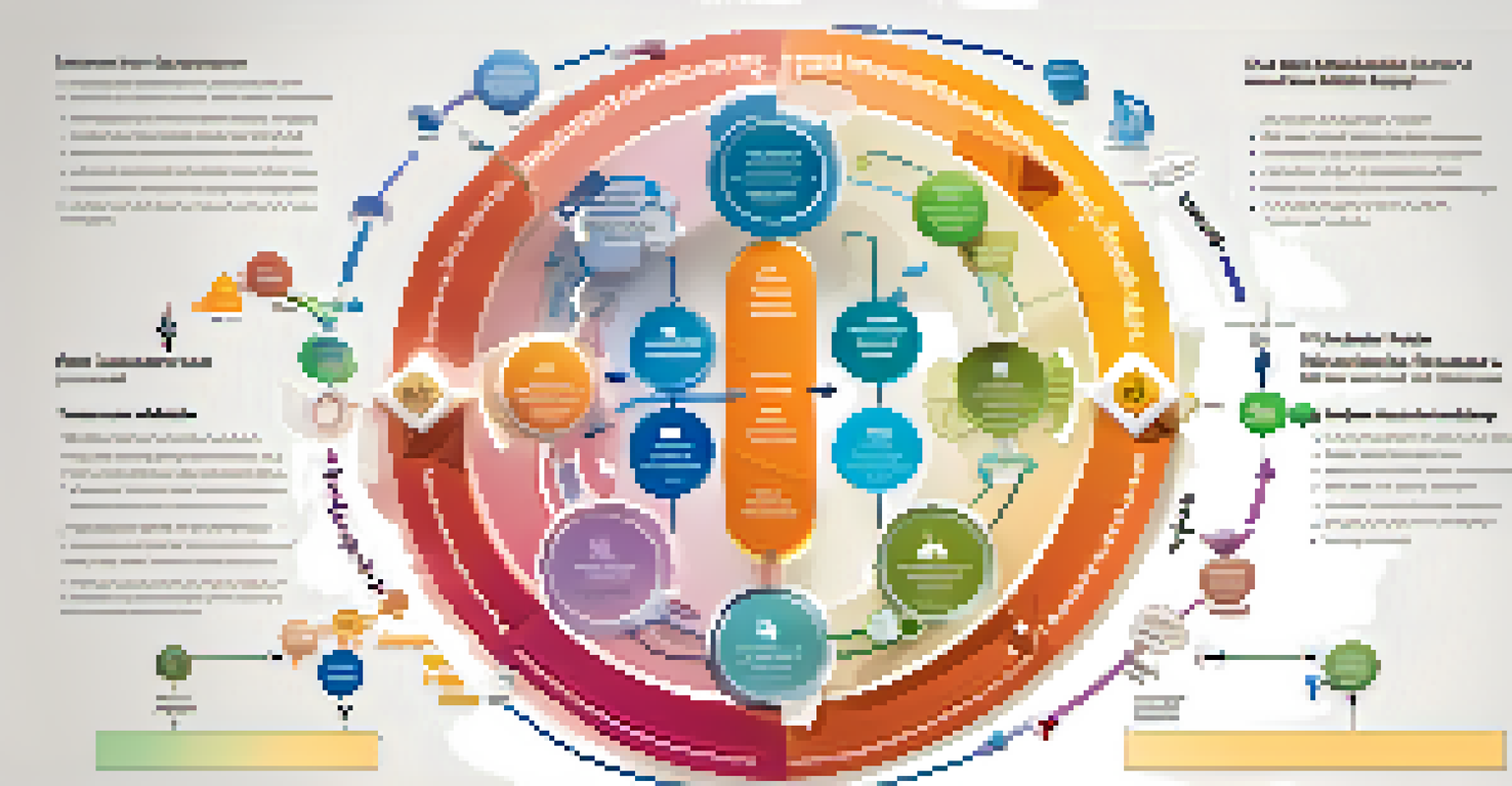Understanding the Research Cycle in Medical Studies

What is the Research Cycle in Medical Studies?
The research cycle in medical studies is a systematic approach to scientific inquiry. It involves a series of stages that guide researchers from initial questions to the application of findings. Understanding this cycle helps in grasping how medical knowledge is created and validated.
Research is formalized curiosity. It is poking and prying with a purpose.
At its core, the cycle starts with identifying a research question or problem. This can stem from gaps in existing knowledge or emerging health issues. By pinpointing what needs exploration, researchers lay the groundwork for a meaningful investigation.
Subsequent stages involve designing the study, collecting data, and analyzing results. Each phase is crucial, as it ensures the reliability and validity of the findings, ultimately contributing to the broader field of medicine.
Identifying the Research Question
The first step in the research cycle is identifying a clear, focused research question. This question should address a specific gap in knowledge or a pressing health concern. For example, researchers might ask how a new drug affects patients with a certain condition.

A well-formulated question not only guides the research process but also helps in formulating hypotheses. These hypotheses are educated guesses that can be tested through research. A clear question sets the tone for the entire study, making it easier to stay on track.
Research Cycle Guides Medical Studies
The research cycle provides a systematic approach that navigates researchers from identifying questions to applying findings in medical studies.
Moreover, involving stakeholders, such as patients or healthcare providers, can refine the question further. Their insights can lead to more relevant and impactful research, ensuring that the study aligns with real-world needs.
Designing the Study: Methods and Protocols
Once the question is established, the next step is designing the study. This involves selecting appropriate methods and protocols to gather data. Researchers must decide whether to use qualitative methods, such as interviews, or quantitative methods, like surveys.
The greatest scientists are artists as well.
The design phase also includes determining the sample size and population. Choosing the right participants is crucial for the study’s validity. For instance, a study on a medication might focus on specific age groups or those with particular health conditions.
Additionally, ethical considerations are paramount during the design stage. Researchers must ensure that their study adheres to ethical guidelines, protecting participants’ rights and wellbeing throughout the research process.
Data Collection: Gathering Evidence
Data collection is a critical phase where researchers gather evidence to answer their research question. This can involve various techniques, such as surveys, interviews, or clinical trials, depending on the study design. Effective data collection is vital for obtaining accurate and reliable results.
During this stage, researchers must maintain consistency and objectivity. This means following established protocols and being mindful of biases that could affect the outcomes. For example, using standardized questionnaires can help minimize variability.
Importance of Clear Research Questions
A well-formulated research question is essential as it directs the study and ensures relevance to real-world health concerns.
Moreover, effective communication with participants is essential. Researchers should clearly explain the study’s purpose and procedures, ensuring that participants feel comfortable and informed about their involvement.
Analyzing the Data: Making Sense of Findings
After data collection, the next step is analysis. This involves using statistical tools to interpret the data and draw conclusions. Researchers look for patterns, correlations, and significant findings that address their initial research question.
Data analysis can be complex, often requiring expertise in statistical methods. Researchers must choose the right analytical techniques based on the type of data collected. For instance, quantitative data may require different analysis methods compared to qualitative data.
Once the analysis is complete, researchers prepare to present their findings. This includes writing reports or papers that detail the methods, results, and implications of the study, making the information accessible to the broader medical community.
Interpreting Results: What Do They Mean?
Interpreting results is a crucial step in the research cycle, as it provides context for the findings. Researchers must consider how their results fit into the existing body of knowledge. For instance, do the findings support or contradict previous studies?
Moreover, researchers should think about the implications of their findings for clinical practice. Understanding what the results mean for patients, healthcare providers, and policy-makers is essential for translating research into real-world applications.
Dissemination Enhances Knowledge Sharing
Effectively sharing research findings through various channels is crucial for advancing medical knowledge and fostering public understanding.
Additionally, discussing limitations during interpretation is important. Acknowledging potential weaknesses in the study helps to provide a balanced view of the findings and lays the groundwork for future research.
Disseminating Research: Sharing Knowledge
Disseminating research findings is essential for advancing medical knowledge. This involves sharing results through various channels, such as academic journals, conferences, and community outreach. Effective dissemination ensures that important findings reach the intended audience.
Researchers often publish their work in peer-reviewed journals, where it undergoes rigorous evaluation by experts in the field. This process helps validate the research and elevates its credibility within the medical community.

Moreover, engaging with the public and healthcare practitioners can enhance the impact of the research. By sharing findings in accessible language and formats, researchers can foster a better understanding of health issues among various stakeholders.
The Importance of the Research Cycle in Medicine
Understanding the research cycle is vital for anyone involved in medical studies. It provides a structured approach to answering important health questions and contributes to evidence-based practice. Each phase of the cycle plays a role in ensuring the integrity and relevance of research.
Moreover, the research cycle fosters collaboration among researchers, practitioners, and patients. By working together through each phase, stakeholders can ensure that research is grounded in real-world needs and experiences, leading to more effective solutions.
Ultimately, a solid grasp of the research cycle empowers individuals to critically evaluate studies and apply findings to improve health outcomes. This knowledge is essential for advancing medical science and enhancing patient care.